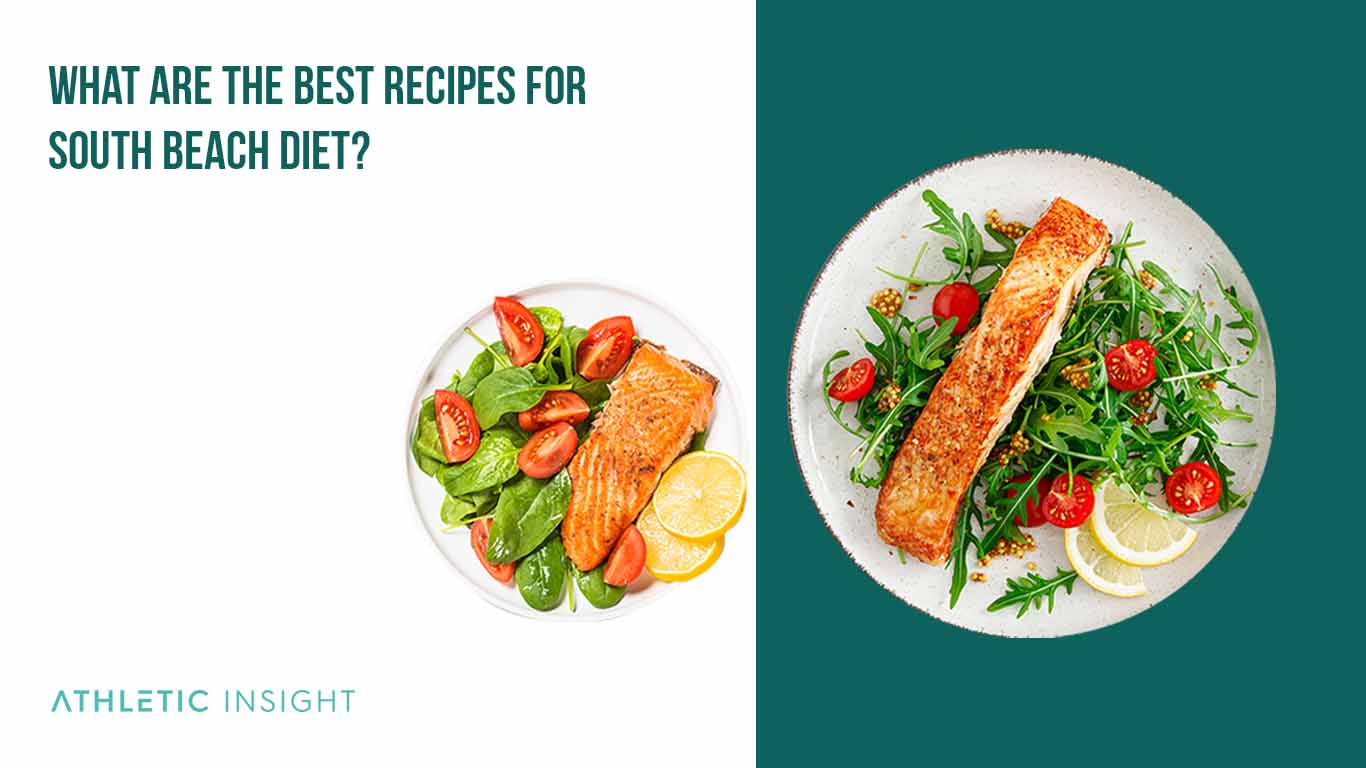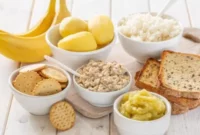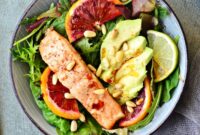South Beach Diet benefits extend far beyond simple weight loss. This diet, known for its phased approach to carbohydrate restriction, offers potential advantages for managing blood sugar, improving cardiovascular health, and promoting overall well-being. Understanding the mechanisms behind these benefits, however, requires a closer look at the diet’s nutritional composition and its impact on various metabolic processes. This exploration delves into the science-backed advantages and potential drawbacks, providing a balanced perspective on the South Beach Diet’s efficacy.
The South Beach Diet distinguishes itself from other popular weight-loss plans through its emphasis on healthy fats and lean proteins while gradually reintroducing carbohydrates. This approach aims to stabilize blood sugar levels, reduce insulin resistance, and improve lipid profiles. While promising, it’s crucial to consider potential nutrient deficiencies and long-term sustainability to make an informed decision about its suitability for individual needs.
Weight Management Aspects of the South Beach Diet
The South Beach Diet, unlike many restrictive diets, focuses on sustainable weight loss through a phased approach emphasizing healthy food choices and balanced macronutrient intake. It prioritizes minimizing blood sugar spikes and promoting satiety, leading to reduced cravings and easier adherence. This approach differs significantly from diets solely focused on calorie restriction, often leading to feelings of deprivation and eventual weight regain.
Mechanisms of Weight Loss on the South Beach Diet
The South Beach Diet’s effectiveness in weight management stems from several key mechanisms. Firstly, the initial phase restricts refined carbohydrates and sugary foods, which are often high in calories and low in nutritional value. This reduction in readily available glucose minimizes insulin spikes, preventing fat storage and promoting fat burning. Secondly, the diet emphasizes lean protein and healthy fats, leading to increased satiety and reduced overall calorie consumption. The combination of these factors contributes to a calorie deficit, necessary for weight loss. Finally, the diet encourages regular exercise, further enhancing calorie expenditure and improving overall health.
Role of Carbohydrate Restriction in Weight Management
The South Beach Diet’s approach to carbohydrate restriction is gradual and strategic. Unlike very low-carbohydrate diets, it doesn’t completely eliminate carbohydrates. Instead, it initially restricts refined carbohydrates like white bread, sugary drinks, and processed foods, while allowing complex carbohydrates like whole grains and fruits in later phases. This measured approach helps to stabilize blood sugar levels, preventing the energy crashes and cravings often associated with drastic carbohydrate cuts. The focus shifts from eliminating carbs entirely to choosing the right types of carbohydrates. This promotes sustained energy levels and prevents the metabolic slowdown sometimes observed with severe carbohydrate restriction.
Comparison with Other Popular Diets
Compared to diets like ketogenic diets, which severely restrict carbohydrates, the South Beach Diet allows a more moderate intake of carbohydrates, particularly in later phases. This makes it potentially easier to adhere to long-term. Compared to low-fat diets, the South Beach Diet allows for healthy fats, which contribute to satiety and can aid in weight management. Unlike many fad diets that promise quick weight loss through extreme measures, the South Beach Diet focuses on sustainable lifestyle changes, promoting long-term weight management and improved overall health.
Sample Meal Plan for Weight Management
A sample meal plan for the initial phase of the South Beach Diet might include:
Breakfast: Scrambled eggs with spinach and a small portion of whole-wheat toast.
Lunch: Grilled chicken salad with mixed greens, avocado, and a light vinaigrette.
Dinner: Baked salmon with roasted vegetables (broccoli, asparagus).
Snacks: A handful of almonds, berries.
This meal plan demonstrates the emphasis on lean protein, healthy fats, and non-starchy vegetables, while minimizing refined carbohydrates and sugary foods. The portion sizes would be adjusted based on individual caloric needs.
Macronutrient Distribution Comparison
| Macronutrient | South Beach Diet (Phase 1) | South Beach Diet (Later Phases) | Standard Balanced Diet |
|---|---|---|---|
| Carbohydrates (%) | 10-20 | 40-50 | 45-65 |
| Protein (%) | 30-40 | 25-30 | 10-35 |
| Fat (%) | 50-60 | 30-35 | 20-35 |
Note: These are approximate ranges and can vary depending on individual needs and the specific phase of the South Beach Diet. A registered dietitian can provide personalized recommendations.
Impact on Blood Sugar and Insulin Levels
The South Beach Diet, with its emphasis on limiting refined carbohydrates and prioritizing healthy fats and lean proteins, significantly impacts blood sugar and insulin levels. This impact stems from the diet’s carefully structured approach to carbohydrate intake, promoting better glucose control and improved insulin sensitivity.
The diet’s influence on blood glucose control is primarily achieved through the restriction of high-glycemic index (GI) foods. These foods, characterized by their rapid digestion and absorption, cause a sharp spike in blood sugar levels followed by a subsequent crash. By limiting these foods, the South Beach Diet promotes a more gradual and sustained release of glucose into the bloodstream, minimizing these dramatic fluctuations. This is crucial for maintaining stable energy levels and preventing the negative health consequences associated with chronic hyperglycemia.
Glycemic Index of Allowed and Restricted Foods
The South Beach Diet differentiates between “good” and “bad” carbohydrates based on their GI. Foods with a low GI, such as whole grains, legumes, and most vegetables, are encouraged. These foods are digested and absorbed more slowly, leading to a gentler rise in blood sugar. Conversely, high-GI foods like white bread, sugary drinks, and processed pastries are restricted. A visual representation could be a bar graph comparing the GI values of various foods allowed and restricted on the diet. The graph would clearly show the lower GI values of the permitted foods compared to the high GI values of restricted items. For example, a portion of whole-wheat bread might have a GI of 50, while a portion of white bread might have a GI of 70. Similarly, a serving of berries might have a GI of 40, whereas a serving of candy might have a GI of 80. The graph would visually demonstrate the diet’s strategy of choosing low-GI foods for better blood sugar management.
Insulin Sensitivity and Secretion
By promoting stable blood sugar levels, the South Beach Diet positively influences insulin sensitivity and secretion. Insulin is a hormone that helps the body use glucose for energy. When blood sugar levels are consistently high, the body becomes less responsive to insulin (insulin resistance), requiring the pancreas to produce more insulin to maintain glucose homeostasis. The South Beach Diet, by mitigating blood sugar spikes, helps to improve insulin sensitivity, meaning the body can utilize insulin more effectively. This reduction in insulin resistance reduces the burden on the pancreas, leading to more balanced insulin secretion.
Research Findings on Type 2 Diabetes and Prediabetes
Several studies have investigated the South Beach Diet’s effects on individuals with type 2 diabetes or prediabetes. These studies often report significant improvements in blood glucose control, HbA1c levels (a measure of long-term blood sugar control), and insulin sensitivity among participants following the diet. While more large-scale, long-term studies are needed to confirm these findings conclusively, the existing research suggests that the South Beach Diet may be a beneficial dietary approach for managing blood sugar levels in individuals with these conditions. For instance, one study might show a significant reduction in HbA1c levels after six months of following the South Beach Diet compared to a control group following a standard diabetic diet. Another study might demonstrate improvements in fasting blood glucose and insulin levels among individuals with prediabetes.
Nutritional Aspects and Potential Deficiencies
The South Beach Diet, while effective for weight loss and blood sugar control, may present certain nutritional challenges if not carefully managed. Understanding the diet’s nutritional composition and potential deficiencies is crucial for long-term adherence and overall health. This section will explore the typical nutritional makeup of South Beach meals, identify potential shortcomings, and provide strategies for mitigating these risks.
Nutritional Composition of a Typical South Beach Diet Meal Plan
A typical South Beach Diet meal plan emphasizes lean protein sources such as fish, poultry, and beans; healthy fats like olive oil and avocados; and non-starchy vegetables such as leafy greens, broccoli, and peppers. Fruits are included, but often in moderation, especially in the initial phases. Whole grains are introduced gradually. This approach prioritizes foods with a low glycemic index, aiming to stabilize blood sugar levels and promote satiety. However, the restrictive nature of the early phases, particularly the limitation on certain fruits and grains, can lead to potential nutrient gaps.
Potential Nutrient Deficiencies
Restricting entire food groups, even temporarily, can lead to nutrient deficiencies. The South Beach Diet, particularly in its early phases, may result in lower intakes of fiber (due to limited whole grains and fruits initially), certain vitamins (like vitamin C from fruits and some B vitamins from whole grains), and minerals (such as magnesium and potassium, also found in whole grains and certain fruits). Furthermore, the exclusion of certain healthy fats in the initial phases might affect the intake of essential fatty acids, though this is typically addressed as the diet progresses. The lack of dairy in some versions could impact calcium intake.
Strategies to Mitigate Potential Nutrient Deficiencies
To address potential deficiencies, careful meal planning is key. Prioritizing nutrient-dense foods within the South Beach framework is essential. For example, incorporating a variety of colorful vegetables ensures a broader range of vitamins and minerals. Choosing lean protein sources that are also good sources of certain nutrients, such as salmon (rich in omega-3 fatty acids), can be beneficial. Including healthy fats like nuts and seeds can help address potential essential fatty acid deficiencies. As the diet progresses and more food groups are reintroduced, focusing on whole grains, fruits, and dairy (if tolerated) will help fill any remaining nutritional gaps. Supplementation, while not always necessary, could be considered in consultation with a healthcare professional if deficiencies are suspected or confirmed through blood tests.
Incorporating a Variety of Nutrient-Rich Foods
The South Beach Diet doesn’t need to be restrictive in terms of variety. Many delicious and nutrient-rich foods align perfectly with its principles. For example, incorporating a wide array of non-starchy vegetables like spinach, kale, bell peppers, and asparagus provides diverse vitamins, minerals, and fiber. Lean protein sources such as chicken breast, turkey, fish (salmon, tuna, cod), and beans offer protein and various micronutrients. Healthy fats from sources like avocados, olive oil, nuts, and seeds contribute to satiety and overall health. As the diet progresses, gradually incorporating whole grains like quinoa, brown rice, and oats provides additional fiber and nutrients. Fruits like berries, which are lower in sugar compared to some other fruits, can be included in moderation, contributing to vitamin and antioxidant intake.
Essential Vitamins and Minerals and Their Sources
| Vitamin/Mineral | Important Role | South Beach Diet Sources | Tips for Increasing Intake |
|---|---|---|---|
| Vitamin C | Immune function, antioxidant | Bell peppers, berries (in later phases) | Include a variety of colorful vegetables daily. |
| Vitamin B6 | Metabolism, brain function | Chicken breast, fish | Choose lean protein sources rich in B vitamins. |
| Magnesium | Muscle function, blood sugar control | Leafy greens, nuts (in later phases) | Incorporate leafy greens regularly, add nuts and seeds as allowed. |
| Potassium | Fluid balance, blood pressure | Spinach, tomatoes | Consume a variety of potassium-rich vegetables. |
Epilogue
Ultimately, the South Beach Diet’s effectiveness hinges on individual adherence and careful consideration of potential drawbacks. While offering compelling benefits in weight management, blood sugar control, and cardiovascular health, it’s essential to approach it with a balanced perspective. Consulting a healthcare professional or registered dietitian is strongly recommended to assess its suitability and ensure safe and effective implementation, particularly for individuals with pre-existing health conditions. The key to success lies in informed choices and a commitment to sustainable lifestyle modifications.




